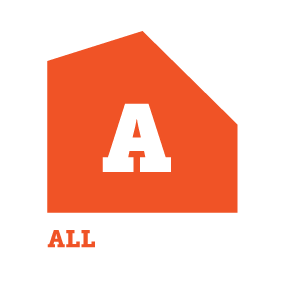124: Proposed building consent exemption conditions for small standalone dwellings
Earlier this month, the Building Performance team published a checklist of the proposed conditions that must be met when using the small standalone dwellings building consent exemption. This exemption is expected to be in force by early 2026.

This checklist explains the conditions that you must meet to build small standalone dwellings (also known as granny flats) without a building consent.
Small standalone dwellings must have a simple design and meet the Building Code
The building must comply fully with all the relevant requirements of the New Zealand Building Code.
- The building must be new and standalone.
- The building must be single storey.
- The building is classified as: Housing – detached dwelling (defined by Clause A1 of the Building Code). This means it must:
- comply with all the requirements of the Building Code that apply to this classified use
- be intended for a single household or family.
Building dimensions
- The net floor area must be no greater than 70 square metres.
- The building must have:
- a maximum floor level of 1 metre above ground
- a maximum height of 4 metres above the floor level.
- The building must be 2 metres or more away from any other structure or legal boundary.
Construction material
- The building must be designed and built using lightweight building products for the roof.
- The frame must be built using light steel or light timber.
Wall cladding must have a weight not exceeding 220kg/m2.
Amenities
- Plumbing and drainage works should be simple and designed and built in accordance with the Acceptable Solutions for compliance with these clauses of the Building Code:
- Clause E1
- Clause G12
- The building must have:
- interconnected smoke alarms throughout
- independent points of supply for electricity and gas (where applicable), and
- electric or gas heaters.
- Level-entry showers are permitted only once a relevant licence class has been established.
Building practitioners
- All work on a building must be carried out or supervised by licensed building professionals (Licensed Building Practitioners (LBPs) and licensed plumbers, drainlayers, gasfitters and electricians).
- All building work must have a Record of Work (RoW), Certificate of Work (CoW) and energy work certificate:
- A new record of work form is proposed for plumbing and drain laying work on exempt small standalone dwellings.
- For small standalone dwellings, energy work certificates may include certificates of compliance, electrical safety certificates and gas safety certificates.
Council notification
You must notify your council before you start to build and when building is complete.
- Building owners must notify their council of their intention to build via a request for a Project Information Memorandum (PIM). This will be through a new or updated PIM form. This enables councils to share relevant information with owners and supports the collection of development contributions.
- Councils must advise homeowners on whether the proposed building work is likely, unlikely or uncertain to meet the proposed building consent exemption. However, this is not an approval process and homeowners can choose to build irrespective of council advice.
- Building owners must provide councils, on completion of work, a set of plans (for both building and plumbing and drainage work). These plans must include any changes that occurred between the initial design and the completion of the build. This is an administrative process and councils cannot review built plans to determine if a small standalone dwelling complies with the Building Code.
- Choosing to build on land where a natural hazard exists, as defined by section 71(3) of the Building Act 2004, may require a building consent. This is unless adequate provision has been made to protect the land, building work, or other property from the natural hazard.
- Owners must meet all building consent exemption conditions. Otherwise, owners are required to get a building consent. Existing building work underway is not eligible to be exempt from requiring a building consent. Councils retain their existing powers to address non-compliant building work.
These conditions and the proposed building consent exemption for small standalone dwellings are currently before parliament for consideration. Further changes to the exemption may be possible throughout this process.
To find out more visit:
Proposed building consent exemption conditions for small standalone dwellings(external link) — Building Performance
Take the time to learn about the changes so you can help your clients prepare for the new rules.
Quiz
- What is the maximum size of a small standalone dwelling under the proposed exemptions?
- 50m2
- 60m2
- 70m2
- The plumbing and drainage work should be simple, and some of that must comply with Clause E1 of the Building Code. What does Clause E1 refer to?
- Plumbing
- Surface water
- Drainage
- External moisture
- Who must carry out or supervise the work on small standalone dwellings?
- Licensed electricians
- Licensed plumbers, gasfitters, and drainlayers
- Licensed building practitioners
- All the above
- All building work, in relation to the exemption, must have a Record of Work (RoW), a Certificate of Work (CoW), and energy work certificate.
- True
- False
Answers
1: c. 70m2
2: b. Surface water
3: d. All the above
4: a. True
